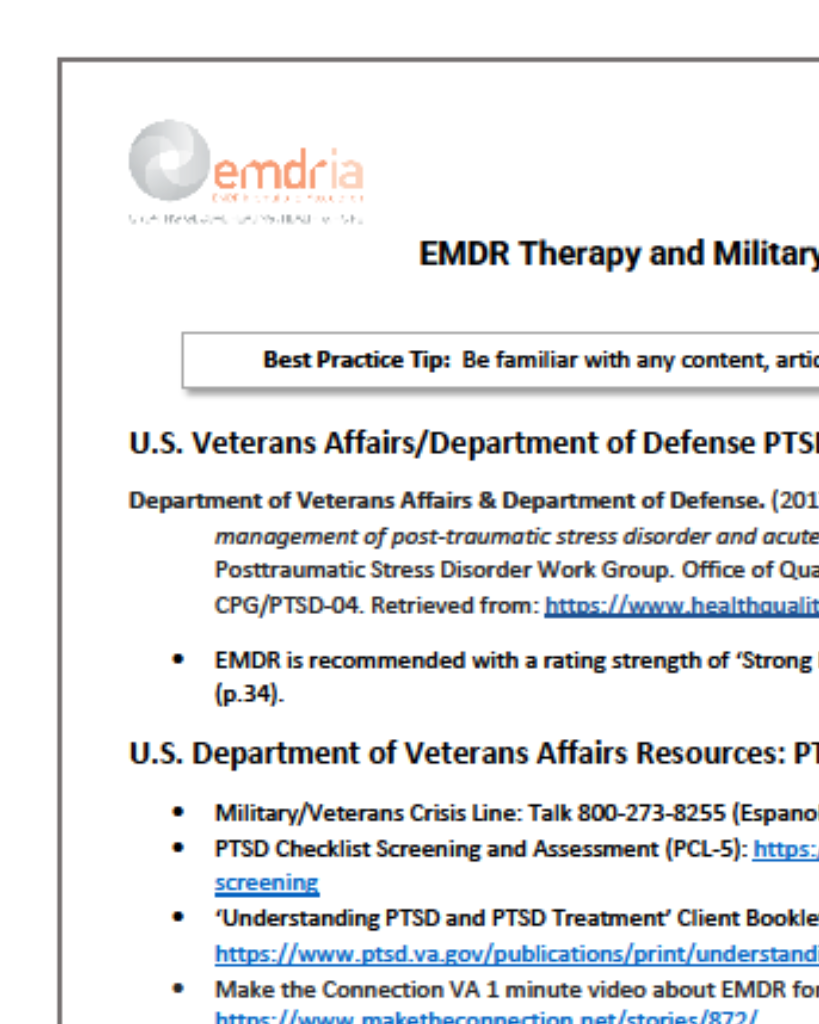Successful treatment of secondary hypersomnia due to complex post-traumatic stress disorder with eye movement desensitization and reprocessing: A case report
This report explored the relationship between psychological trauma in complex PTSD and secondary hypersomnia, and clinical improvement after EMDR therapy in hypersomnolence and excessive daytime sleepiness (EDS).
Article Abstract
“Hypersomnia may be classified as primary or secondary, with secondary hypersomnia arising from a variety of underlying causes. Thus, according to ICSD3-TR classification, the diagnosis of idiopathic hypersomnia (IH) is established based on (1) excessive daytime sleepiness (EDS); (2) electrophysiological findings including either a mean sleep latency of less than 8 min on the Multiple Sleep Latency Test (MSLT) or increased total sleep (≥11 h) on 24 h polysomnography; and (3) systematic elimination of other potential etiologies, including sleep deprivation, substances, and medical, psychiatric (notably mood disorders), or sleep disorders. Nevertheless, the clinical heterogeneity observed in IH fuels an ongoing debate, reflecting the limited understanding of its underlying pathophysiological mechanisms.
This report describes the case of a patient presenting with a clinical and polysomnographic phenotype of IH (MSLT < 8 min). A comprehensive psychopathological evaluation was performed to explore the possibility of secondary hypersomnia, which revealed features consistent with complex post-traumatic stress disorder (c-PTSD). Psychotherapy focused on c-PTSD was administered with positive and objective results in hypersomnolence/EDS. This clinical improvement suggests a potential relationship between psychological trauma and hypersomnia, a connection that is rarely described in the literature and warrants further investigation. This case highlights the need for a comprehensive assessment of secondary factors, particularly complex trauma, even in the presence of a clinical and polysomnographic phenotype consistent with IH.”
—Description from publisher
Article Access
Open Access
Bucurescu, V., Peter-Derex, L., Fantini, M. L., & Putois, B. (2025). Successful treatment of secondary hypersomnia due to complex post-traumatic stress disorder with eye movement desensitization and reprocessing: A case report. Clocks & Sleep, 7(3), 43. Open access: https://doi.org/10.3390/clockssleep7030043
Date
August 15, 2025
Creator(s)
Vlad Bucurescu, Laure Peter-Derex, Maria Livia Fantini
Contributor(s)
Benjamin Putois
Topics
Complex Trauma/C-PTSD, Sleep
Extent
9 pages
Publisher
MDPI
Rights
Copyright: © 2025 by the authors.
APA Citation
Bucurescu, V., Peter-Derex, L., Fantini, M. L., & Putois, B. (2025). Successful treatment of secondary hypersomnia due to complex post-traumatic stress disorder with eye movement desensitization and reprocessing: A case report. Clocks & Sleep, 7(3), 43. Open access: https://doi.org/10.3390/clockssleep7030043
Audience
EMDR Therapists
Language
English
Content Type
Article, Peer-Reviewed
Access Type
External Resource, Open Access





